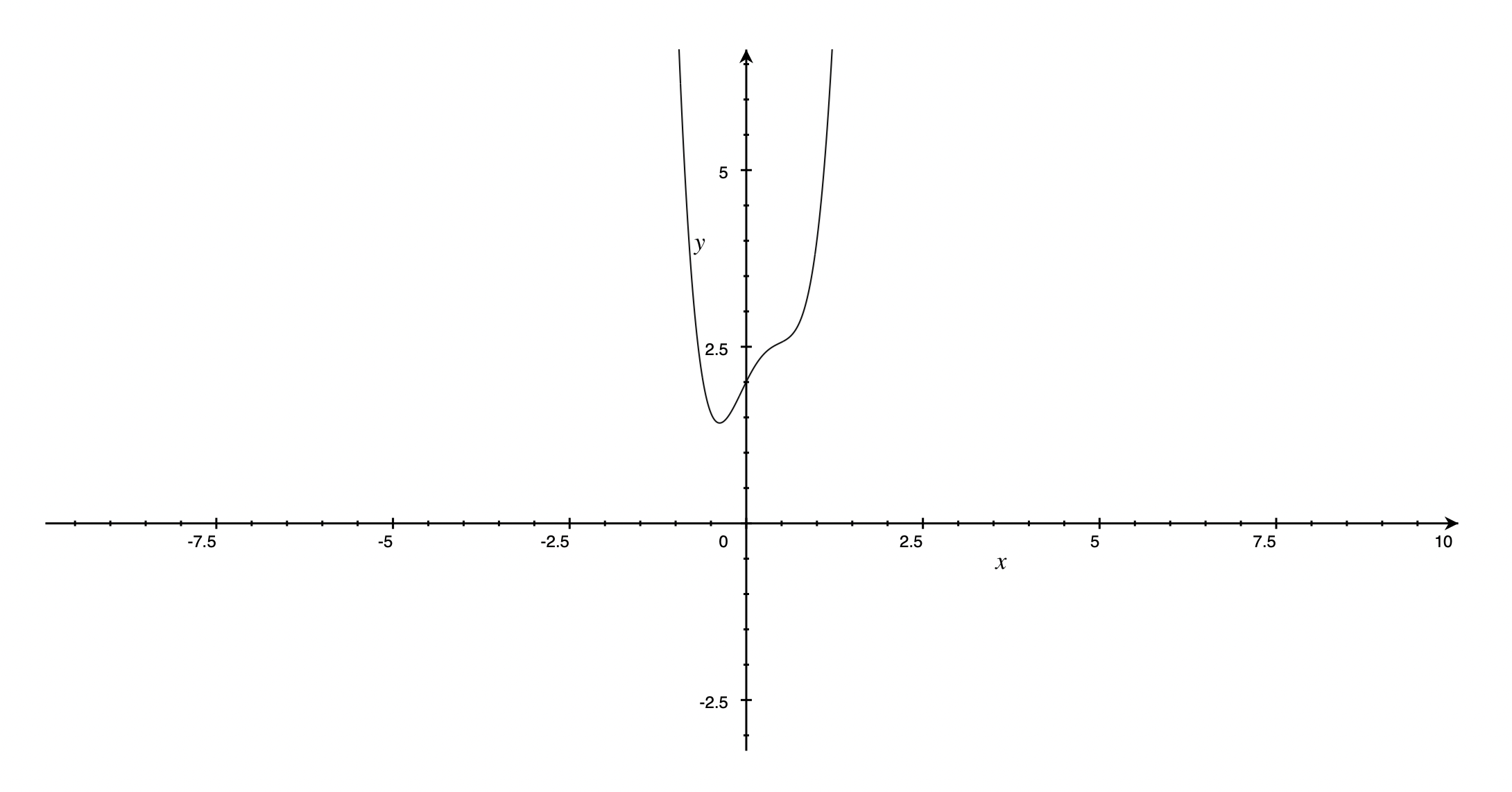
Nonnegative Polynomials
Definition
A polynomial $p: \R \to \R $ is
nonnegative (a
nonnegative polynomial,
nonnegative real
polynomial) if
\[
p(x) \geq 0 \quad \text{for all } x \in \R
\]
Testing nonnegativity
Given polynomial $p$, how do we know if $p$
is (globally) nonnegative?
Consider $p: \R \to \R $ defined by
\[
p(x) = 5x^4 - 4x^3 - x^2 + 2x + 2
\]

Given the coefficients of $p$, namely the list
$(2, 2, -1, -4, 5) \in \R ^5$, how can we
tell?
It is not so obvious, but if we write
\[
p(x) = (x^2 + 1)^2 + (2x^2 - x - 1)^2,
\]
We can ask two questions: